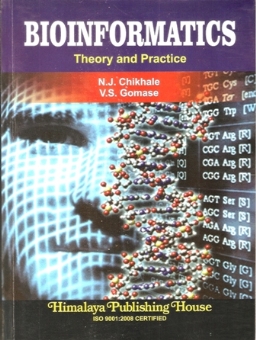Bioinformatics: Theory and Practice
no information available
Bioinformatics and Genomics play an increasingly important and transformative role in pharmaceuticals, medical, biotechnology, microbiology, agriculture, life sciences and society. Bioinformatics is the use of computers to retrieve, process, analyze and simulate molecular virology information. The mapping of the human genome has revealed 35,000 or so genes, which might code for more than one protein, resulting in 100,000 proteins for the humans alone. Since proteins are attractive for developing drugs, researchers and scientist's efforts are now underway to map sequences and assign functions to many novel proteins. It promises to revolutionize the process of drug discovery and development. This book provides a broad, application-overview of bioinformatics and biotechnology. In addition, the state-of-the-art in bioinformatics is evaluated equally from a global view by introducing real application scenarios such as genome projects that require the use of a whole set of bioinformatics tools. This appears to be an excellent textbook for students, researchers, scientists and bioinformaticians. This book is a very valuable and important resource for bringing bioinformatics into the work practice of geneticists. Also this is essential reading for all those engaged in genetic and new drug development research. This book takes the novel approach to cover the methods, sequence and structure analysis of nucleotides, proteins in one volume and an algorithmic perspective. Most of the chapters include tables that are designed to propose an orderly use of methods that are discussed in the chapters. There are very few examples of these types of tables and oversimplification that may not always justify. We hope that these tables and figures will be useful for the less experienced in this field, but we expect that the more experienced researchers in the field will have other, probably better, way of achieving the same goal. There are many references to web address and FTP locations where these methods may be applied or program obtained is given in the book. In some cases, as far the commonly used bioinformatics programs, we have provided a grate deal of information about using the programs, tools for analyzing the results. There are many other important bioinformatics tools that are available for sequence analysis. We have tried to cover as many of them. This book provides a basic understanding of the theories, associated algorithms, resource, and tools used in functional and structural bioinformatics for genetic research. The reader emerges with the ability to make effective use of protein, DNA, RNA, and complex structures to better understand biological function. Moreover, it drams a clear connection between sequence studies and the rational design of new therapies. The profound knowledge on bioinformatics presented here not only enables readers to beyond a mere push-button approach to using bioinformatics software and interpreting the data generated appropriately. It is also essential to assess the potential of today’s bioinformatics software and future challenges. Bioinformatics theory and practices is a timely and much-needed textbook, which provides an accessible and thorough introduction to a subject. Which has become a fundamental part of biological science today. Content of book is helpful for analysis of DNA, RNA and proteins. The aim of the book is to integrate an understanding of the biological background of bioinformatics with development of necessary computing skills. Without describing computer science or sophisticated programming skills. In detail, the book supports and encourages the application of the many powerful computational tools of bioinformatics in a way that is both relevant to and stimulating for reader. The book contains numerous online analysis examples to encourage students, researches to engage with the subject and with the accompanying web site, to develop a working understanding and appreciation of the power of bioinformatics as a research tool. This book is highly recommended for academic, biotechnology, pharmaceuticals, medical agriculture, genomics, proteomics, life science and for researchers as a theory and practical. Although this book is aimed at professional geneticists, the numerous worked example would be useful to anyone putting a course together on this topic. Contents : 1. Introduction of Bioinformatics 2. The central Dogma of Biology 3. Amino Acid Information 4. Functional Genomics 5. Biological Databases and Databanks 6. Biological Databases and Databanks – II 7. Name and function of Database 8. Retrieval of Data and its Description 9. Gene Expression Analysis 10. Microarray and Gene Expression 11. Pairwise Sequence Alignments 12. Fasta and Blast 13. Multiple Sequence Alignments 14. Methods of Gene Prediction 15. Rna Secondary Structure Prediction References Abbreviations and acronyms ... Read more Read less











